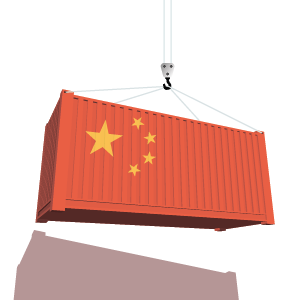
CIO Views: Markets withstand August’s volatility
- 02 Septiembre 2024 (3 min de lectura)
KEY INVESTMENT THEMES
August bounce may augur well for rest of 2024

| August’s volatility spike has not proved serious enough to derail markets’ robust year-to-date performance. But while equities and bonds rebounded quickly, additional volatility cannot be ruled out given the market’s sensitivity to the economic news flow. However, market fundamentals remain supportive. The US Federal Reserve will likely begin to cut interest rates soon - following the moves from other central banks, while company earnings have largely met growth expectations. Decent investment returns could well be sustained into the end of 2024, with growth equities, such as technology stocks potentially leading the way. High yield and other less interest-rate-sensitive bonds are showing the most potential in terms of offering the lowest risk path to sustaining positive returns for the rest of 2024. |
High yield’s opportunity
| High-yield bonds are often seen as some of the riskier inhabitants of a portfolio, as their higher return potential – compared to say government-issued debt - means taking on more risk. But during the recent market wobble, partly driven by concerns that the Federal Reserve is being too slow to cut interest rates, the asset class held up very well. While the S&P 500 endured a sharp drop, US high yield lost less than 1% - and has fully recovered since. There are reasons for this resilience; for example, high yield bonds typically have shorter maturities than many investment grade bonds, meaning they can be less exposed to interest rate risk than bonds with longer maturities. Overall, we believe if the US continues to avoid recession – and we’re not forecasting one – this attribute could prove helpful in the coming months. | 
|
China’s uphill journey of rebalancing its economy

| As China’s economy rebalances towards consumption and productivity growth, two of its main tools have been infrastructure and manufacturing investment. But these come with the threat of deflation and overcapacity. This backdrop can affect export prices, contributing to fears of exporting deflation. While this is presently being tolerated, as countries grapple with high inflation, it may not be when inflation rates fall within target ranges. Therefore, an exit from deflation, helped by global trade, looks increasingly challenging. The export sector has been an important driver for China’s economy and any slowing would imply growing uncertainty for the industrial sector's outlook. Trade tensions also remain a concern. The current stimulus plan, if fully implemented without changes, may add to disinflationary pressures, and increase the future debt burden. |
Asset Class Summary Views
Views expressed reflect CIO team expectations on asset class returns and risks. Traffic lights indicate expected return over a three-to-six-month period relative to long-term observed trends.
| Positive | Neutral | Negative |
|---|
Rates | Developed economy data points to interest rate cuts from September - path from there is less certain. | |
|---|---|---|
US Treasuries | Fed likely to ease in September. Volatility remains a risk on new economic data and path from the first cut | |
Euro – Core Govt. | Further ECB rate cuts expected; political uncertainty remains a risk | |
Euro – Peripherals | Presents opportunities and higher real yields than Bunds | |
UK Gilts | Interest rate cuts fully discounted; markets await fiscal plans | |
JGBs | Uncertainty over Bank of Japan policy normalisation path. Yen remains volatile | |
Inflation | Stable expectations, with gradually lower inflation for the rest of 2024 |
Credit | Favourable pricing is increasing the asset class’s contribution to excess returns | |
|---|---|---|
USD Investment Grade | Without significant growth deterioration, credit to remain resilient | |
Euro Investment Grade | Resilient growth and lower interest rates support credit’s income appeal | |
GBP Investment Grade | Returns supported by better growth and expectations of rate cuts | |
USD High Yield | Narrative of growth without inflation is supportive. Fundamentals and funding remain strong | |
Euro High Yield | Strong fundamentals, technical factors and ECB cuts support total returns | |
EM Hard Currency | Higher quality universe, well-placed with US interest rate cuts commencing |
Equities | Lower inflation will impact earnings cycle. Unmet return expectations from AI spending is a risk | |
|---|---|---|
US | Growth and quality to continue to dominate - but need to watch company earnings momentum | |
Europe | Attractive valuations, along with positive economic and earnings surprises | |
UK | Relatively more attractive valuations and positive economic momentum | |
Japan | Benefitting from semiconductor growth. Reforms and monetary policy in focus for broader performance | |
China | Growth remains unbalanced. Accelerating industrial output masks a weak consumer | |
Investment Themes* | Secular spending on technology and automation to support relative outperformance |
*AXA Investment Managers has identified six themes, supported by megatrends, that companies are tapping into which we believe are best placed to navigate the evolving global economy: Technology & Automation, Connected Consumer, Ageing & Lifestyle, Social Prosperity, Energy Transition, Biodiversity.
CIO team views draw on AXA IM Macro Research and AXA IM investment team views and are not intended as asset allocation advice.
Disclaimer
Este documento tiene fines informativos y su contenido no constituye asesoramiento financiero sobre instrumentos financieros de conformidad con la MiFID (Directiva 2014/65/UE), recomendación, oferta o solicitud para comprar o vender instrumentos financieros o participación en estrategias comerciales por AXA Investment Managers Paris, S.A. o sus filiales.
Las opiniones, estimaciones y previsiones aquí incluidas son el resultado de análisis subjetivos y pueden ser modificados sin previo aviso. No hay garantía de que los pronósticos se materialicen.
La información sobre terceros se proporciona únicamente con fines informativos. Los datos, análisis, previsiones y demás información contenida en este documento se proporcionan sobre la base de la información que conocemos en el momento de su elaboración. Aunque se han tomado todas las precauciones posibles, no se ofrece ninguna garantía (ni AXA Investment Managers Paris, S.A. asume ninguna responsabilidad) en cuanto a la precisión, la fiabilidad presente y futura o la integridad de la información contenida en este documento. La decisión de confiar en la información presentada aquí queda a discreción del destinatario. Antes de invertir, es una buena práctica ponerse en contacto con su asesor de confianza para identificar las soluciones más adecuadas a sus necesidades de inversión. La inversión en cualquier fondo gestionado o distribuido por AXA Investment Managers Paris, S.A. o sus empresas filiales se acepta únicamente si proviene de inversores que cumplan con los requisitos de conformidad con el folleto y documentación legal relacionada.
Usted asume el riesgo de la utilización de la información incluida en este documento. La información incluida en este documento se pone a disposición exclusiva del destinatario para su uso interno, quedando terminantemente prohibida cualquier distribución o reproducción, parcial o completa por cualquier medio de este material sin el consentimiento previo por escrito de AXA Investment Managers Paris, S.A.
La información aquí contenida está dirigida únicamente a clientes profesionales tal como se establece en los artículos 194 y 196 de la Ley 6/2023, de 17 de marzo, de los Mercados de Valores y de los Servicios de Inversión.
Queda prohibida cualquier reproducción, total o parcial, de la información contenida en este documento.
Por AXA Investment Managers Paris, S.A., sociedad de derecho francés con domicilio social en Tour Majunga, 6 place de la Pyramide, 92800 Puteaux, inscrita en el Registro Mercantil de Nanterre con el número 393 051 826. En otras jurisdicciones, el documento es publicado por sociedades filiales y/o sucursales de AXA Investment Managers Paris, S.A. en sus respectivos países.
Este documento ha sido distribuido por AXA Investment Managers Paris, S.A., Sucursal en España, inscrita en el registro de sucursales de sociedades gestoras del EEE de la CNMV con el número 38 y con domicilio en Paseo de la Castellana 93, Planta 6 - 28046 Madrid (Madrid).
© AXA Investment Managers Paris, S.A. 2024. Todos los derechos reservados.
Advertencia sobre riesgos
El valor de las inversiones y las rentas derivadas de ellas pueden disminuir o aumentar y es posible que los inversores no recuperen la cantidad invertida originalmente.


